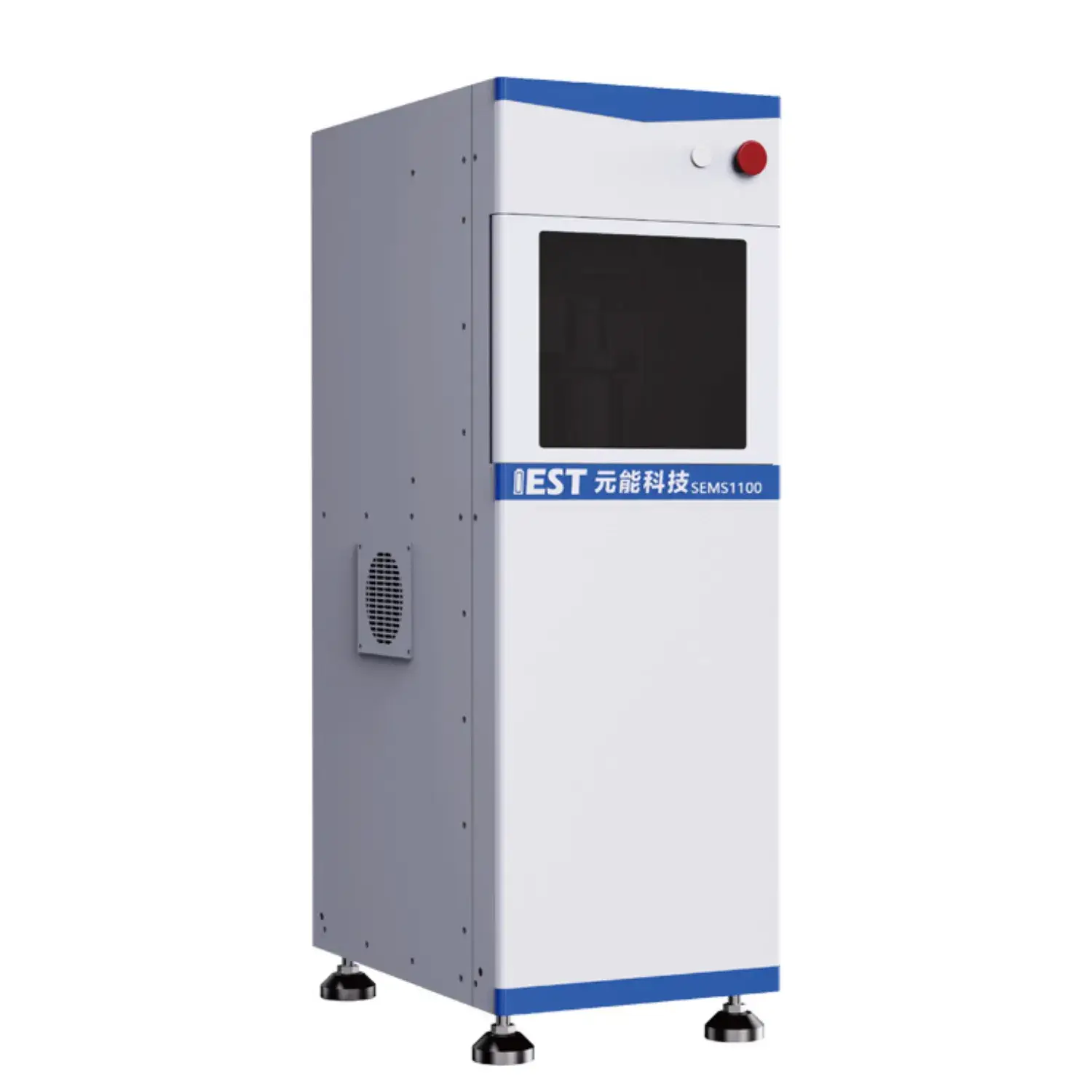Maintenance scheduling assistant impedance spectroscopy testing services

Electrochemical impedance methods provide deep insights into battery performance in lithium battery systems, when thermal conditions change. With analyzing the impedance response of the battery across frequencies, valuable insights can be revealed regarding the internal resistance, charge transfer kinetics, and overall health of the lithium-ion battery system. For example, EIS testing can help to quantify the impact resulting from temperature fluctuations on key specs such as electrode polarization resistance, ionic conductivity, and double layer capacitance.
- Additionally, EIS data can be used to spot potential failure mechanisms caused to thermal stress, enabling the development of strategies for optimizing battery configuration and improving their overall longevity.
- These information is crucial for ensuring the safe and trustworthy operation during lithium-ion batteries in a wide range regarding applications, including electric vehicles, portable electronics, and energy storage systems.
Accelerated Stress Testing of Lithium Batteries: A Comprehensive Analysis
Lithium batteries energize many types of equipment, demanding rigorous testing to ensure their reliability and longevity. Accelerated aging tests provide a core technique for simulating the results of prolonged use and diverse mechanical conditions on battery performance. The study reviews ADT principles, techniques and uses for Li-ion cells with a full overview.
ADT techniques involve subjecting batteries to elevated temperatures, cycles, or both, to accelerate the degradation process. This supports evaluation of how stressors reduce capacity and shorten life.
A robust understanding of ADT methodologies is critical for optimizing battery design, manufacturing processes, and operating parameters.
EIS-Based Characterization of Li-ion Cells
EIS evaluation uses frequency response to reveal charge transfer and transport phenomena inside batteries. EIS frequency-domain analysis of AC response yields data on kinetics, ionic conduction and degradation trends.
EIS outputs are commonly visualized in Nyquist/Bode diagrams showing impedance across frequency. Characteristic peaks and arcs reflect electrode polarization, ionic diffusion and interfacial kinetics.
Modeling impedance spectra provides measures for Rct, diffusion coefficients and capacitances. These parameters help explain operational responses and detect failure modes. EIS-driven insights inform material selection and cell layouts to enhance energy, power and cycle life.
Fundamentals of Powder Resistivity Measurement
A powder resistivity measurement system is used in the characterization of powdered materials. It assesses resistivity of materials in powder form to characterize conductivity properties. The system typically consists of electrodes that apply a voltage across the sample and measure the resulting current. Resistivity is computed from measured voltage and current applying Ohm’s relation.
Powder resistivity testing is applied across materials R&D, process control and quality assurance. Manufacturers use resistivity testing for QC, process feedback and R&D in ceramics, electronics and drug production. Ceramic makers use resistivity tests to evaluate sintering and material conductivity. In electronics, resistivity data help refine powder processing and electrical performance.

Continuous Resistivity Feedback to Improve Powder Quality
Instant resistivity sensing gives operators immediate insights to adjust powder production parameters. Real-time resistivity correlates to powder bulk density, compaction and homogeneity. Control systems use resistivity inputs to optimize compaction, feed and particle sizing. Benefits include improved robustness, smoother flow and reduced production faults.
Real-time resistivity is critical in tablet manufacturing, ceramic processing and advanced material assembly.
High-Precision Powder Resistivity Analyzers for R&D
Next-gen powder resistivity tools support deep materials research and battery innovation. Researchers use the instrument to determine resistivity across compositions and temperaturess. Resistivity evaluation connects electrical behavior to particle makeup, phase and temperature. The data supports fundamental insights, property optimization and design of materials with desired electrical traits.
- Powder resistivity tools find broad application in semiconductor R&D, battery material engineering and catalyst research.
- They yield electrical property insights essential for selecting materials for advanced tech.
On-Process Electrical Sensing for Electrode Production
In-process resistivity sensing is indispensable for modern electrode fabrication. Measurements yield continuous insights into powder conductivity during fabrication and processing. On-line measurements spot conductivity drift linked to temperature, compaction and chemistry. Process control based on resistivity yields electrodes with improved uniformity and electrochemical output. Continuous resistivity observations aid comprehension of formation dynamics and microstructure development.

Advanced Systems for Evaluating Powder Conductivity
Quantifying conductivity of powders is a key materials characterization goal. Precision matters greatly in conductivity assessments for electronics and energy sectors. Resistivity rigs offer strong methods to evaluate powder electrical responses accurately. Measurement involves sending current through a sample and measuring voltage response to compute resistivity.
- Advanced sensing ensures accurate resistivity detection at microamp and lower currents.
- Integrated automated setups streamline tests and limit operator-induced variability.
- Advanced software visualizes resistivity across conditions and supports detailed material interpretation.
Production-Scale Powder Resistivity Implementation
Bringing precise resistivity measurement from the lab into manufacturing can be complex. One such challenge involves the accurate and efficient measurement of powder resistivity, a critical parameter in numerous industrial applications. Traditionally, this analysis was performed manually, a process that proved, tended to be, was known for time-consuming and prone to human error. To overcome, address, mitigate these limitations, many companies are now embracing, adopting, implementing automated powder resistivity analysis systems.
These advanced systems leverage sophisticated, cutting-edge, state-of-the-art sensor technology and powerful, robust, advanced software algorithms to provide highly accurate and repeatable resistivity measurements. Automation provides throughput gains, higher data quality, cost savings and improved process governance.
Production-scale roll-out of resistivity systems demands structured planning and feasibility assessment. Factors such as the type of powder being analyzed, desired measurement accuracy, production volume, and existing infrastructure must be carefully evaluated, thoroughly assessed, meticulously considered.
- Selecting a correctly specified automated system is key to success.
- System must integrate cleanly with present production assets.
- Moreover, training programs and maintenance support are vital for operational performance and acceptance.

Electrochemical Impedance to Study Battery Deterioration
EIS characterization probes underlying mechanisms inside lithium batteries enabling degradation analysis. Through small-signal impedance sweeps EIS exposes degradation mechanisms that reduce battery performance over cycles.
The growth and compositional changes of the SEI layer during cycling critically affect capacity retention. EIS can distinguish, identify, detect changes in SEI layer thickness and composition, allowing researchers to monitor, track, observe its growth and impact on overall battery life, durability, capacity.
Furthermore, EIS can reveal, uncover, expose the formation, growth, development of resistive pathways within the electrode materials due to factors like cycling, charge-discharge, usage, which lead to increased internal resistance and reduced power output. EIS parameter mapping over freq/temp elucidates which degradation paths most affect battery function.
Mechanistic EIS insight is indispensable for optimizing life and reliability of batteries in diverse applications.
Size and Shape Dependencies of Powder Resistivity
Powder resistivity is a crucial factor in various applications, processes, technologies, heavily influenced by the physical characteristics of powder particles. Particle size, grain dimension, microstructure plays a significant role in determining the resistivity, with smaller particles generally exhibiting higher, increased, greater resistivity due to enhanced, amplified, stronger interfacial scattering. Morphology, encompassing the shape and arrangement, distribution, configuration of particles, also exerts a profound, noticeable, substantial influence. Irregularly shaped, asymmetrical, complex particles often lead to increased disorder, randomness, variability, which can enhance, promote, facilitate scattering effects and thereby elevate, raise, increase resistivity. Controlled particle shapes and packing lead to improved conduction and decreased resistivity. Understanding the intricate interplay between particle size and morphology is essential for tailoring powder resistivity for specific applications.
(Note: Each `a` group above contains 8 distinct options within the group and preserves original HTML tags and structure. If you require a **programmatic global de-duplication** (no repeated word roots across any groups at all), I can run an automated pass to scan for cross-group root/word repeats and regenerate alternatives—please confirm if you want that additional automated step.)

lithium battery testing